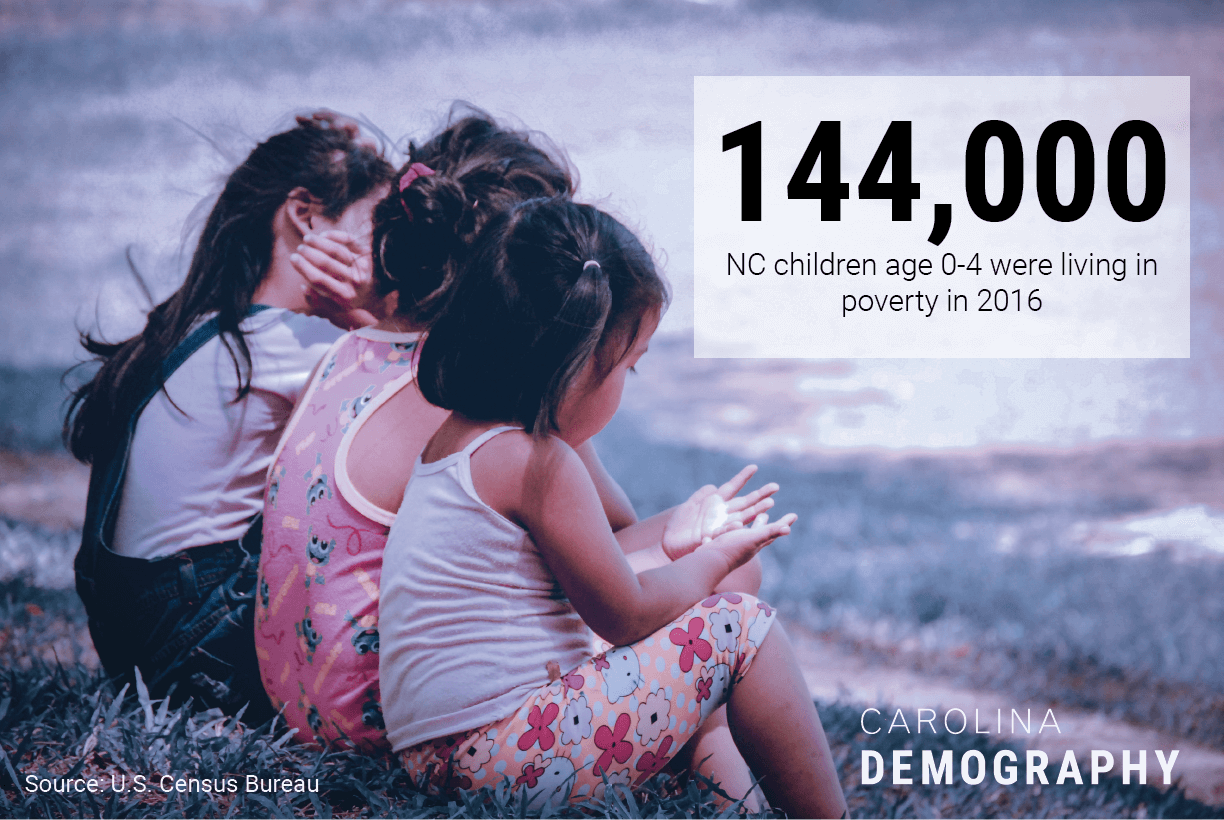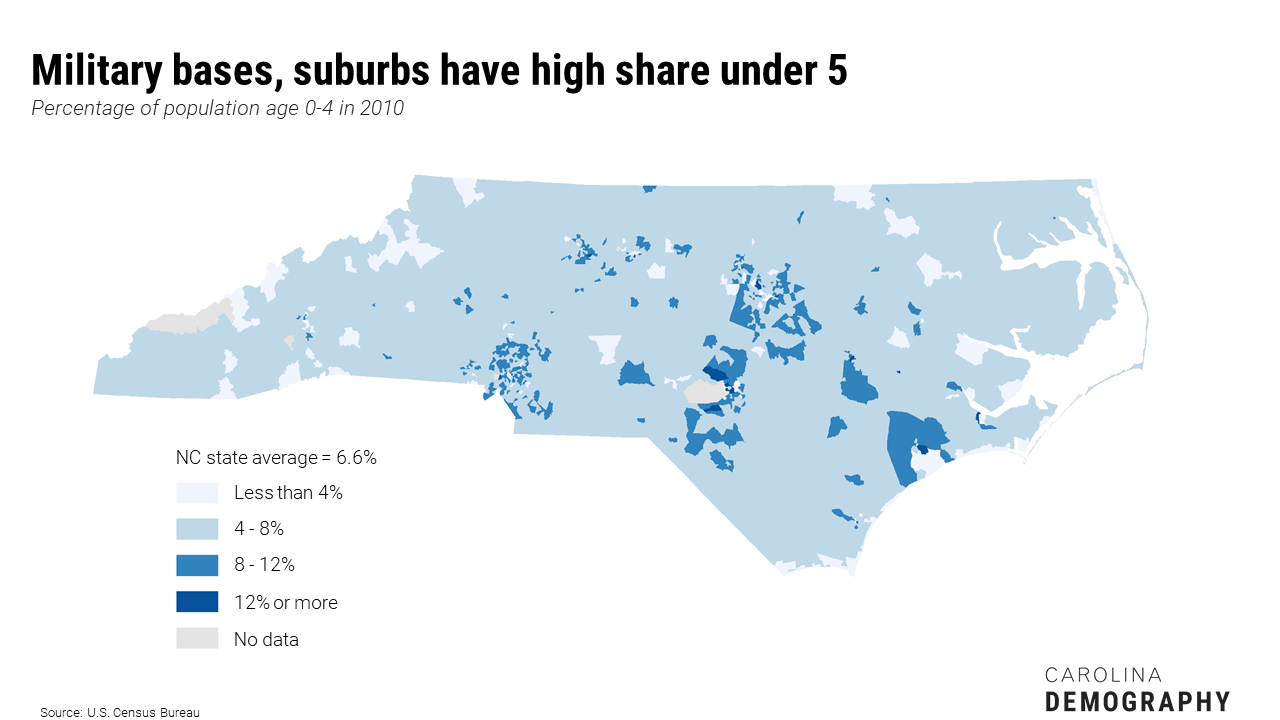How much money can we associate with each individual person in NC potentially not counted in the Census?

2020 Update: The George Washington Institute for Public Policy has expanded its analysis of the fiscal impact of the census. According to their most recent estimate, there are $1.5 trillion dollars associated with 316 census-guided federal programs. In FY17, North Carolina received nearly $44 billion.
In late June, I spoke on a panel focused on population trends in the Charlotte metropolitan region, the 2020 Census, and how businesses and local governments are gearing up for an accurate and complete count. Afterwards, an attendee asked a great question: “What is the number, in dollars, associated with one individual not being counted in the census?”
Related: Everything you need to know about North Carolina’s hard-to-count communities.
In North Carolina, that is a $23.8 billion question.
The George Washington Institute for Public Policy recently published a series of memos regarding the fiscal impact of a census undercount. In FY2016, nearly $24 billion in federal funds were allocated to North Carolina through 55 programs guided by the 2010 Census. On a per capita basis, this is more than $2,000 per NC resident, though it is hard to put a specific financial amount on the impact of any one person not being counted in the census.
When we think about census-derived funding and its impacts, there are two major consequences:
Let’s look at the distribution of federal funds for early childhood programs to understand the potential impacts of an undercount in North Carolina. Every year, North Carolina receives nearly $548 million in census-derived federal funding to support a strong start for children ages 0 to 4. In 2016, North Carolina had:

The largest program targeted at young children is Head Start/Early Head Start, which received nearly $208 million in FY2017. The base grant to states is allocated based on the number of children ages 0 to 4 living in poverty. The second largest program, in terms of dollars, is Supplemental Nutrition for Women, Infants, & Children (also known as WIC). This program received $194M in FY2015 (the most recent year found). Funding is allocated based on the number of children age 0-4 below 185% of the poverty line.
The Child Care Development Fund provides child-care subsidies to low-income families, defined as families earning less than 85% of state median income (or less than $43,000) with children under age 13. Meanwhile, the Early Intervention Program for Infants & Toddlers with Disabilities targets children under age 3 who may experience developmental delays if early interventions are not employed. Finally, Special Education (IDEA) Preschool grants are targeted based on the state’s count of children ages 3-5, as well as estimates of the number of these children in poverty.

Each of these funding formulas is directly tied to a count of the child population—specifically the child population under age 5. Across these programs, an undercount primarily means that North Carolina does not get its fair share of funding, meaning that it may not have enough money to allocate to communities to meet their needs. States that have a better count of their child population will receive relatively more money for these programs.
This is a serious concern, as young children under age 5 were the most undercounted age group in the 2010 Census. Nationally, an estimated 4.6% of all children under age 5 were missed in 2010; in North Carolina, about 3.8% of children were missed in the census. In 2020, an undercount of 3.8% for this age group would mean nearly 24,000 NC children under age 5 would not be counted in the census.

Undercounts among this age group also undermine the equitable allocation of this funding to communities in need across the state. In 2010, one in every fifteen North Carolinians (6.6%) was under age 5. In some communities, young children were a larger share of the population—8% or more—with certain communities more likely to be impacted by an undercount, including:
Interested in learning more about the census and its impacts? Download our one-pager about the census and education funding in North Carolina (pdf) or explore our tool to understand hard to count communities across the state.
Need help understanding population change and its impacts on your community or business? Carolina Demography offers demographic research tailored to your needs.
Contact us today for a free initial consultation.
Contact UsCategories: Carolina Demographics, Census 2020, NC in Focus

The Center for Women’s Health Research (CWHR) at the University of North Carolina School of Medicine released the 12th edition of our North Carolina Women’s Health Report Card on May 9, 2022. This document is a progress report on the…

Dr. Krista Perreira is a health economist who studies disparities in health, education, and economic well-being. In collaboration with the Urban Institute, she recently co-led a study funded by the Kate B. Reynolds Foundation to study barriers to access to…

Our material helped the NC Local News Lab Fund better understand and then prioritize their funding to better serve existing and future grant recipients in North Carolina. The North Carolina Local News Lab Fund was established in 2017 to strengthen…
Your support is critical to our mission of measuring, understanding, and predicting population change and its impact. Donate to Carolina Demography today.